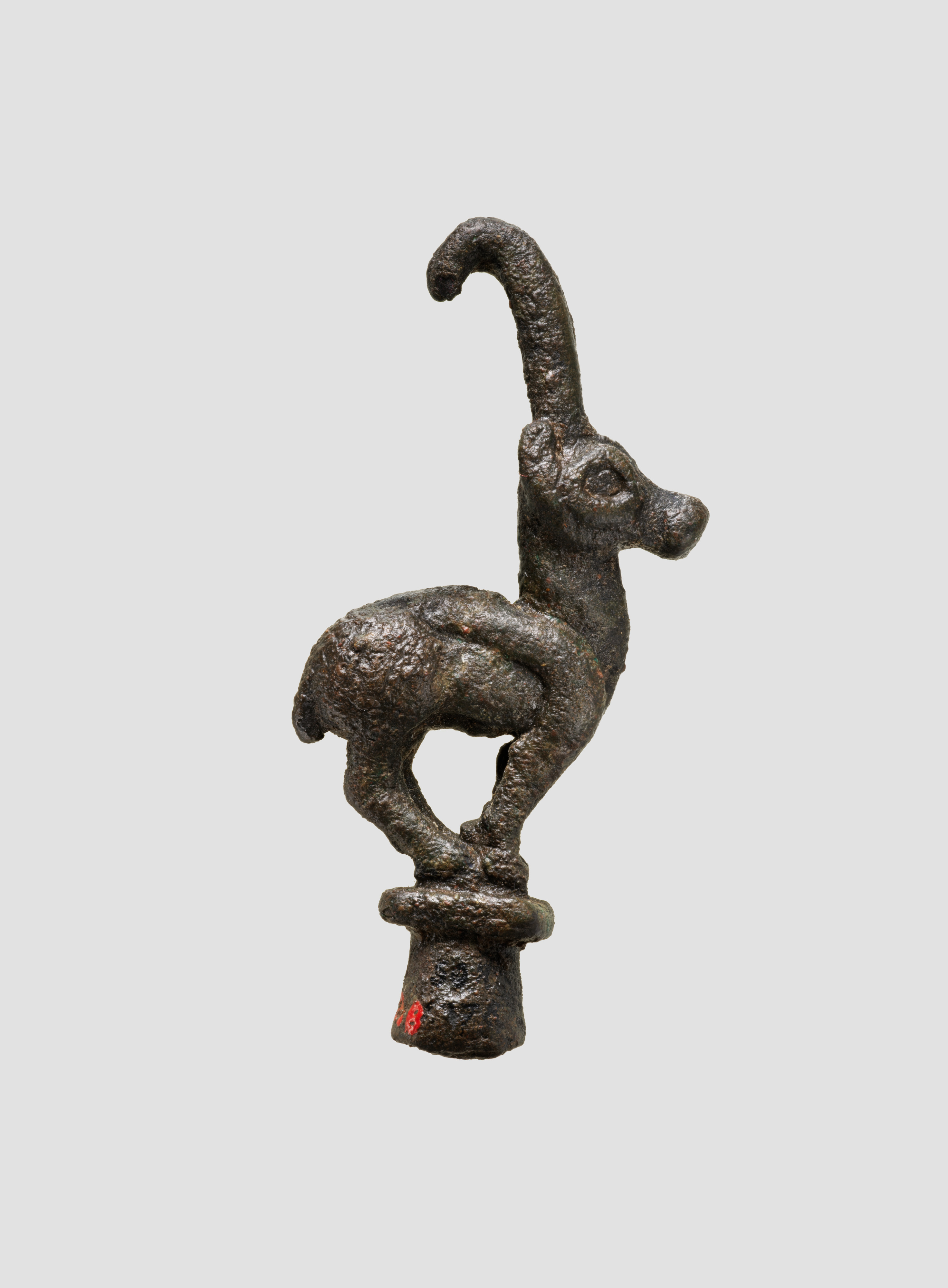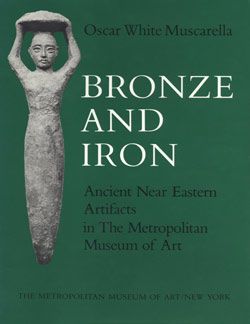Head of pin
Not on view
This is the head of a bronze pin in the form of an ibex in the round. The ibex stands with its feet together on a small plinth, perhaps in imitation of a mountain peak. It has tall, curved horns emerging from the top of its head.
This pinhead was excavated at Surkh Dum, a settlement site in Luristan in the Zagros Mountains of western Iran. It was found in a structure interpreted as a sanctuary and was thus probably an offering to a god. Such pins were probably used to fasten clothing and as objects of adornment in their own right.
The ibex is a distinctly Iranian motif, as they are native to the Zagros Mountains of western Iran, but did not live, for example, on the plains of Mesopotamia. Thus they are a marker of the unique, mountain identity of the people living in western Iran during the Iron Age.
Due to rights restrictions, this image cannot be enlarged, viewed at full screen, or downloaded.
This artwork is meant to be viewed from right to left. Scroll left to view more.




